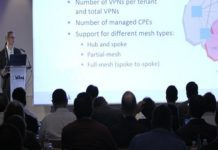Mergers and acquisitions have always been a feature of the global telecoms market, but activity has surged recently with consolidation in full swing. Recent examples, and there are many, include Hong Kong’s Hutchison Whampoa’s acquisition of the UK’s O2, BT’s purchase of EE, Sweden’s TeliaSonera buy-out of Norway’s Tele2 and Orange’s bid for Spanish broadband provider Jazztel.
The centralization of assets can create more streamlined processes and operations, cost optimization, improved control, better quality assurance and better customer experience. They are also a factor in operators’ drive to become more converged, offering all types of communications and entertainment services to their subscribers. In fact, only 29 percent of operators are now mobile only, with the majority being converged.
Centralization on many agendas
So it’s little surprise that centralization is a high priority for operators. According to a global survey by Ovum some 52 percent of operators have implemented or are implementing a centralized operations strategy of some sort, while a further 23 percent are considering it.
Yet, centralization projects are more easily conceived than achieved and most operators say they need assistance with centralization. In the Ovum survey, 73 percent of respondents believe a centralization project should be closely coordinated with a third party, while more than two thirds have had experience working with a network vendor on a centralization project.
Creating a converged operations model is deemed by far the most important structural organizational issue that needs to be addressed, with 78 percent of respondents identifying this as the priority.
Expert support available
Nokia Networks offers a series of services to help operators on the path to a more converged way of operating. The first stage is an eight-week operations assessment, which uses a set of KPIs and proprietary data to benchmark an operator against its peers on operational efficiency and network quality. This is further strengthened with qualitative assessment through anonymous surveys and structured interviews. The benchmark shows operators where they are now and where they need to go, as well as how to make improvements to efficiency, quality and maturity of operations. The process has proven results, with as much as a 30 percent reduction in operating expenses being seen.
The assessment stage has the ultimate objective of preparing an operator to commence its transformation to the Telco Cloud and a more customer centric way of working.
Rationalizing operations centers
Once the results of the assessments have been gathered, two additional services can be offered. The first is the Network Operations Center (NOC) consolidation service, which helps operators create a centralized NOC (across cities, or even countries) supporting both fixed and mobile. The service manages end-to-end transition, right from setting up the consolidated facility to transitioning the operations, managing governance, personnel transformation and other aspects. Once operations are stabilized, they can be transferred back to the operator along with tools and processes.
NOC consolidation has achieved a 21 percent reduction in OPEX for a South American operator and improved first time fix by 23 percent.
Managing transport
Managed Transport is a service in which Nokia Networks manages an operator’s entire transport system, whether it is RF, cable or wireline. Outsourcing transport has proven to greatly improve network quality and aids operators who want to provide a converged offering for their customers. The service has proven to improve Network Quality Index by more than 5 percent. Synergy with Core & Radio Operations further help improve OPEX by 30 percent in field maintenance. It also allows operators to smoothly transition to next generation technologies as a single entity, managing all the underlying complexity.
The service is already benefitting operators, with Nokia Networks chosen by Vodafone India for its pan-India Transport Managed Services, managing both the mobility and transmission network. Nokia Networks is managing a complex transport network consisting of IP Carrier Ethernet, DWDM, SDH and synch equipment from multiple vendors.
Activities cover Network Planning and Optimization, Centralized Network Operations, field operations and infrastructure management. Based on the best practices established during this project, Nokia Networks has developed a scalable, industrialized solution that can be rolled out around the globe for converged operators.


























